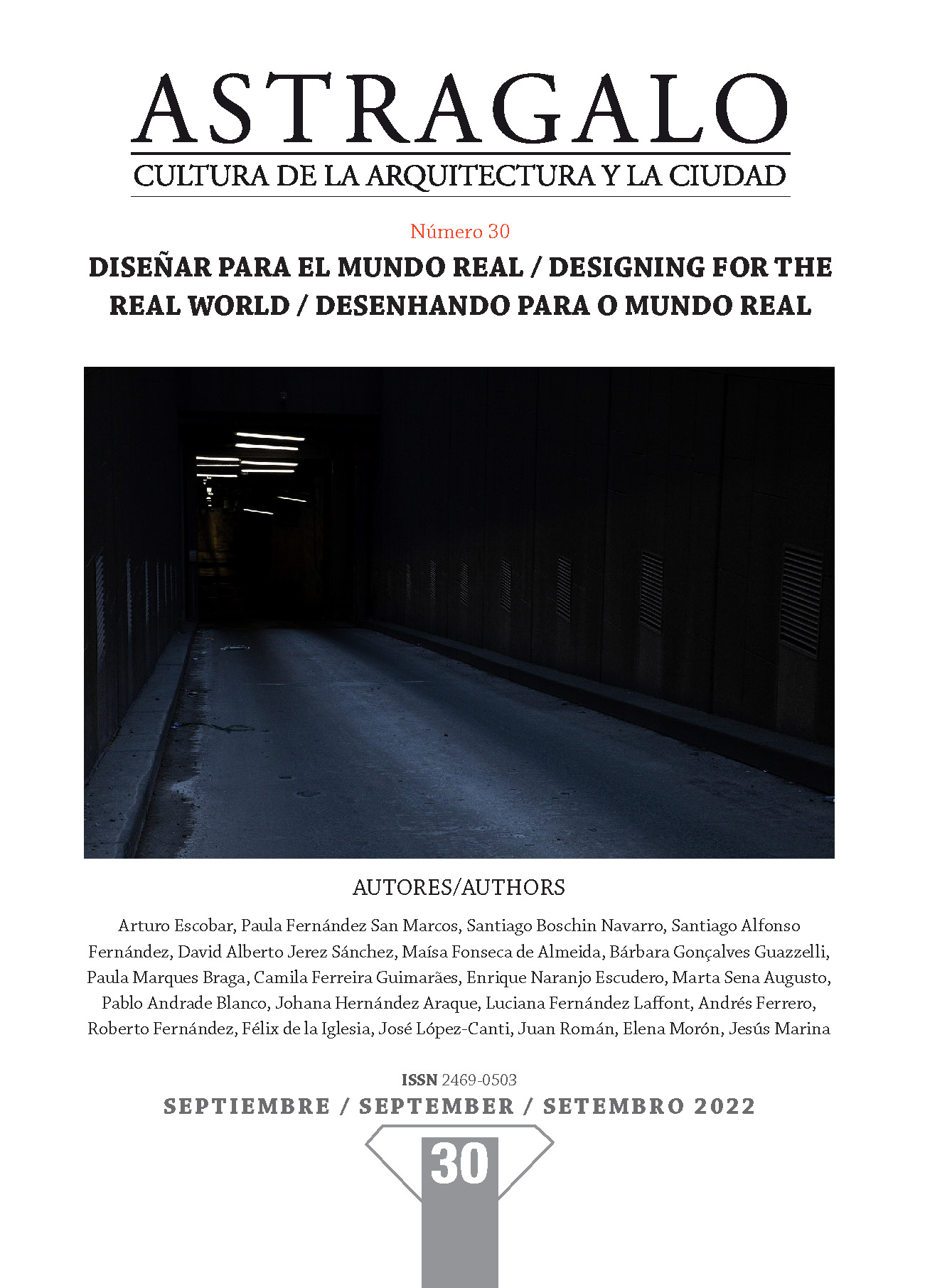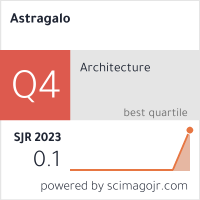The Progressive housing as architectural strategy for the informal growth of the periphery in Latin America
DOI:
https://doi.org/10.12795/astragalo.2022.i30.09Keywords:
self-construction, Latin America, informal city, progressive architecture, urban growthAbstract
In Latin America, degraded areas have become a growth factor. The scale and speed at which they occur make this phenomenon visible as relevant in the imaginary of the Latin American city. This imaginary is associated with misery and deterioration, both socially and architecturally. Thus, the peripheries of the Latin American city rise from self-constructed houses that reproduce in the urban space (and make visible) the conditions of marginality. However, this phenomenon also shows how this architecture adapts to the multiple changes of its inhabitants. From the study of cases, concepts and theories that have transcended and other current ones, this research addresses the study of these values and situations in order to move away from their condition mythologized by the heroic, to establish project strategies to achieve a flexible architecture capable of being designed to absorb these mutations.
Downloads
Metrics
References
“Infierno en Lima”, Caretas, núm. 195, p.27. Citado en Acuña Vigil, Percy. 2006. “Las barriadas: La tarea actual del urbanismo y los planes de vivienda en el Perú”, Hatun Llaqta. Revista Electrónica de Urbanismo [En línea], núm. 230506-01 [Consulta: 9 de diciembre de 2015]. Disponible en <http://www.urbanoperu.com/sites/urbanoperu.com/files/articulos/barriadas.pdf>.
Álvarez Lombardero, Nuria. 2012. “El vecindario como forma de producción de urbanismo. Estudio Teddy Cruz”, La Ciudad Viva [En línea]. [Consulta: 10 de octubre de 2016]. Disponible en <http://www.laciudadviva.org/blogs/?p=14509>.
Aravena, Alejandro y Iacobelli, Andrés. 2012. Manual de vivienda incremental y diseño participativo. Berlín: Hatje Cantz.
Aravena, Alejandro. 2012. “El lugar de la arquitectura”, ARQ, núm.51:73.
Boudon, Philippe. 1972. Lived-in Architecture, Le Corbusier’s Pessac Revisited. Cambridge: MIT Press. Citado en Huxtable, Ada Louis. 1981. “Le Corbusier’s housing project-flexible enough to endure”. The New York Times [en línea]. [Consulta: 15 de septiembre de 2016]. Disponible en <http://www.nytimes.com/1981/03/15/arts/architecture-view-le-corbusier-s-housing-pro- ject-flexible-enough-endure-ada.html?pagewanted=all>.
Burgess, Rod. 1978. “Petty commodity housing or dweller control? A critique of John Turner’s views on housing policy”, World Development, vol. 6, núm. 9-10. En Wiesenfeld Esther. 2001. La autoconstrucción. Un estudio psicosocial del significado de la vivienda, Caracas: Universidad Central de Venezuela.
Busquets, Joan. 2005. La urbanización marginal. Barcelona: Universidad Politécnica de Cataluña.
Cohen, Jean Luis. 2004. Le Corbusier: 1887-1965. El lirismo de la arquitectura en la era mecánica. Madrid: Taschen.
Connolly, Priscilla. 1999. “Mexico City: Our Common Future?”. Enviroment and Urbanization, Vol. 11, núm. 1: 56-78.
Cruz, Daniela.2015. “Propuesta de Tatiana Bilbao en la Bienal de Arquitectura de Chicago responde al problema de la vivienda social en México”, Plataforma de arquitectura [En línea]. [Consulta: 23 de junio de 2016]. Disponible en <http://www.plataformaarquitectura.cl/cl/775166/propuesta-de-tatiana-bilbao-en-la-bienal-de-arquitectura-de-chicago-responde-al-problema-de-vivienda-social-en-mexico>.
Davis, Mike. 2007. Planeta de ciudades miseria. Madrid: Foca.
Froom, Erich. 1956. Psicoanálisis de la sociedad contemporánea. Hacia una sociedad sana. Mexico D.F.: Fondo de Cultura Económica.
García-huidobro, Fernando, Torres, Diego, Tugas, Nicolás. 2008. ¡El tiempo construye!. Barcelona: Gustavo Gili.
Gutiérrez, Ramón. 2002. Arquitectura y urbanismo en Iberoamérica. Madrid: Cátedra.
Habraken, N. John. 1975. Soportes: Una alternativa al alojamiento de masas. Madrid: Alberto Corazón.
Hereu, Pere, Montaner, Josep M., Oliveras, Jordi. 1994. “N.J. Habraken: Soportes. Una alternativa al alojamiento de masas”, en Textos de arquitectura de la modernidad, Nerea, Guipúzcoa: Nerea.
Huxtable, Ada Louis. 1981. “Le Corbusier’s housing project-flexible enough to endure”. The New York Times [en línea]. [Consulta: 15 de septiembre de 2016]. Disponible en http://www.nytimes.com/1981/03/15/arts/architecture-view-le-corbusier-s-housing-pro- ject-flexible-enough-endure-ada.html?pagewanted=all.
Jencks, Charles. 1984. El lenguaje de la arquitectura posmoderna. Barcelona: Gustavo Gili.
Marini, Rui Mauro. 1994. “La crisis del desarrollismo”. En Marini, RM, y MILLÁN, M. (coords.), La teoría social latinoamericana: subdesarrollo y dependencia coordinado por Rui Marini y Márgara Millán: 135-154. El Caballito, México: El Caballito: 135-154.
McGuirk, Justin. 2015. Ciudades Radicales. Un viaje a la nueva arquitectura latinoamericana. Madrid: Turner.
Newman, Oscar. 1972. Defensible Space: Crime Prevention and Urban Design. Nueva York: Macmillan.
ONU. 2012. “Programa de las Naciones Unidas para los Asentamientos Humanos”, ONU-Habitat, Estado de las ciudades de América Latina y el Caribe. Rumbo a una nueva transición urbana. Río de Janeiro: Naciones Unidas.
Pradilla, Emilio. 1987. “Autoconstrucción, Explotación de la fuerza de trabajo y Políticas de Estado en América Latina”. En Capital, Estado y Vivienda en América Latina, 267-344. México D.F.: Fontamara.
Quetglas, Josep. 1994. “Habitar”, Circo [En línea], núm. 15. 4-6. Disponible en .
Solà-morales, Ignasi. 2004. “Arquitectura líquida”, DC. Revista de crítica arquitectónica, núm. 5-6: 25-33.
Turner, John y Mangin, William. 1968. “The Barriada movement”. Progressive Architecture. Vol. 49: 154-162.
Downloads
Published
How to Cite
Issue
Section
License
Copyright (c) 2022 Enrique Naranjo Escudero

This work is licensed under a Creative Commons Attribution-NonCommercial-ShareAlike 4.0 International License.
Accepted 2022-08-29
Published 2022-09-29
- Abstract 1068
- PDF (Español (España)) 1456



















